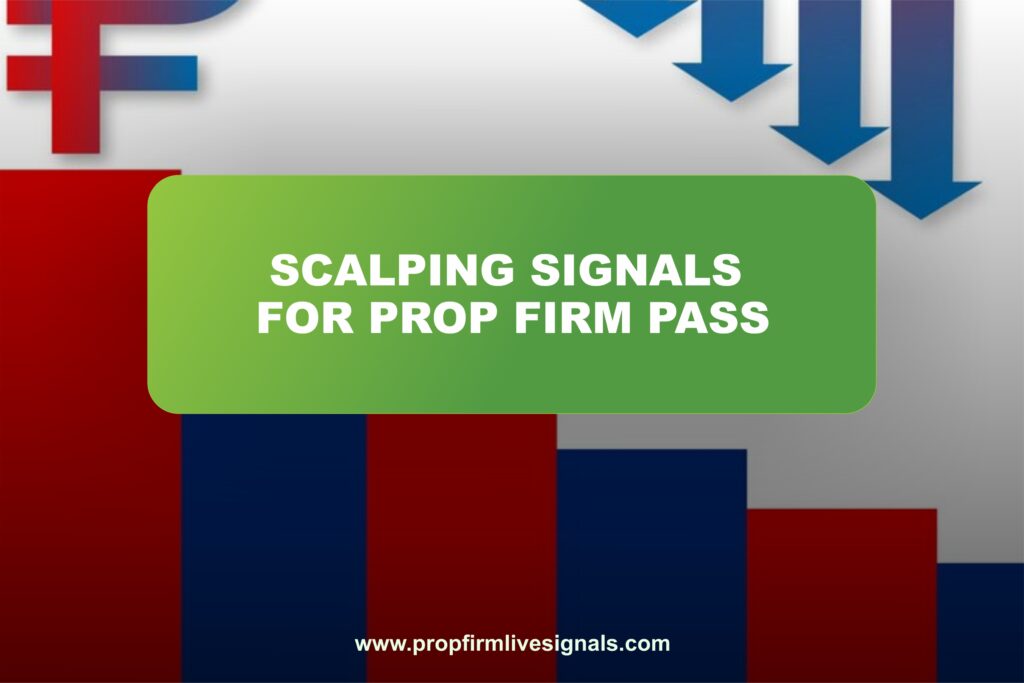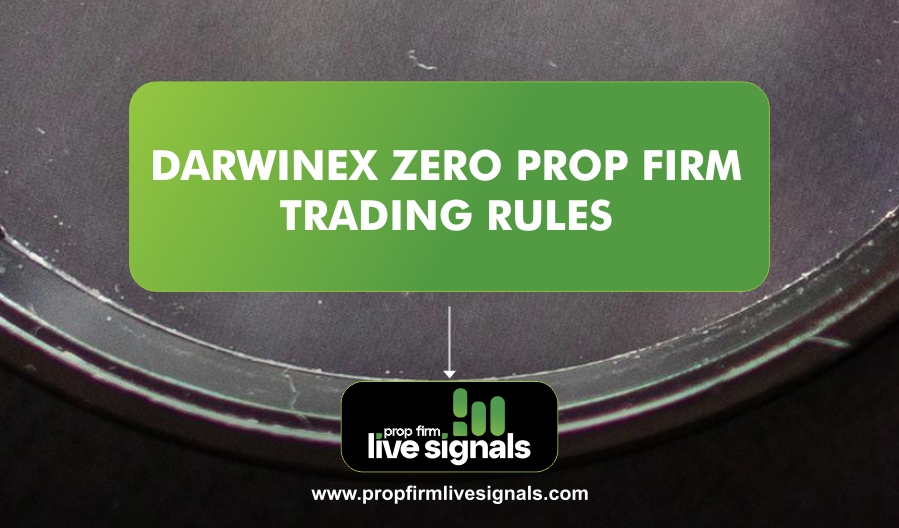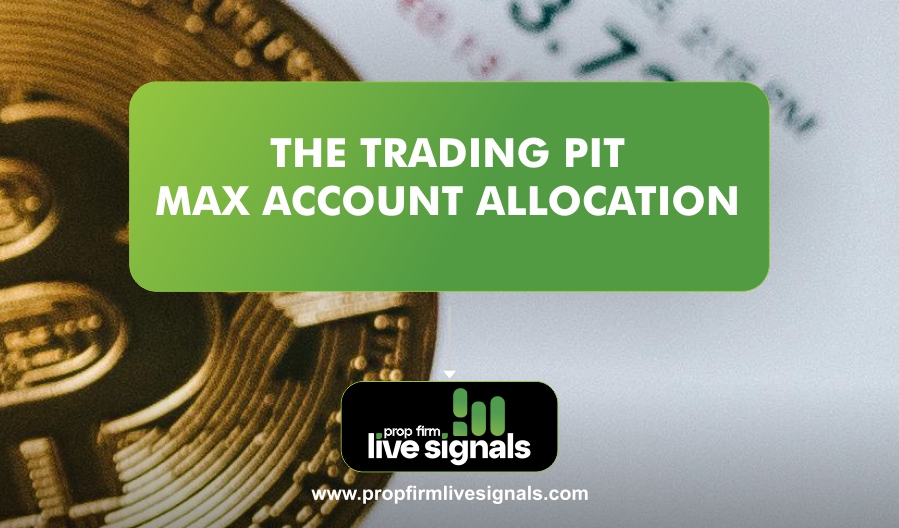In the competitive world of proprietary trading, where firms test traders on their ability to realize consistent profits, scalping emerges among the most popular strategies for traders. Prop firms tend to look for traders to show a clear edge on the market while respecting strict rules of risk management.
Scalping signals target the point of entry and exit within a very short time frame, hence giving one much better chances to scale such challenges, especially when pegged on discipline and a tactical approach.
How Forex Scalping Works
Essentially, scalping attempts to take advantage of minimal fluctuations in prices that last for even a brief amount of time. The positions scalpers hold range from some seconds to minutes.
The idea is to execute multiple trades throughout the day, capturing small profits that add up over time. This contrasts with other trading styles, such as day trading, swing trading, or position trading, which depend on longer time frames to take advantage of larger market movements.
This will be very effective in proprietary trading, where speed, precision, and consistency are required to achieve profit targets without exposing the trader to prolonged market risks. Prop firms tend to favor scalpers who can execute trades swiftly and efficiently, especially in volatile market conditions.
This is where the scalping signals come in they are supposed to provide the trader with the insight to make swift decisions, resulting in a greater likelihood of success in a prop firm evaluation process.
The Role of Scalping Signals in Prop Firm Passes
Most prop firms make trades go through grueling challenges before the trader is granted funding. These challenges are set up to test the trader’s skill, discipline, and how well he can stick to a structured trading plan. Scalping signals can be a game changer for traders looking to pass these challenges for several reasons:
- High Frequency of Trades: Scalpers will probably do many trades during the day, which increases the number of times they may achieve the profit targets set by prop firms.
- Quick Profit Realization: Unlike other strategies based on longer-term trends, scalping allows the trader to lock in small profits with less risk, usually much quicker.
- Reduced Exposure to Market Volatility: Since scalpers hold positions for short durations, they are less vulnerable to sudden market swings, which can be detrimental in a prop firm challenge.
- Consistent Performance: Scalping, when done correctly, can lead to a consistent stream of profits, something that prop firms highly value.
Components of Effective Scalping Signals
The important things to understand in the use of scalping signals for a prop firm pass include the components that make these signals reliable and actionable. Herein are key elements that are vital in forming a robust scalping signal strategy.
1. Choice of Time Frame
Scalpers usually operate on very short time frames, such as 1-minute (M1) or 5-minute (M5) charts. These time frames allow them to spot quick market movements. Scalping signals should be in tune with these short-term charts to ensure that trades are executed at the optimal times.
2. Technical Indicators
Technical indicators are important to identify entry and exit points. Popular indicators for scalping include: Some key elements in technical analysis will involve the following:
- Moving Averages: Showing regularities and smoothing out noisy price action, usually many traders would use a mix of short and long-period MA to provide buy/sell signals.
- RSI-Relative Strength Index: A momentum oscillator taken by traders to find when securities show overbought and oversold conditions to localize potentially unfavorable turnaround moments.
- Bollinger Bands: They help to measure the volatility and the levels where the price is likely to change direction or break through.
- MACD: The moving average convergence divergence is applied to identify any change in momentum and thus could imply reversals in trend.
3. Entry and Exit Rules
These include clear-cut rules regarding when a trade should be initiated or closed. The key ones are:
- Entry: Traders enter positions based on a combination of indicator signals, such as when the price crosses a moving average or when RSI shows an overbought/oversold condition.
- Exit: Exiting a trade can be done using a fixed profit target or when an indicator shows that momentum is fading.
4. Risk Management
The ability to scalp effectively depends a lot on precise risk management. Although each trade offers small profits, consistent losses can add up very fast. Risk management techniques such as setting tight stop-loss orders and trading only a small portion of your capital are essential to minimize losses while maximizing gains.
5. Market Conditions
Scalping works best in certain market conditions, such as during periods of high volatility or when the market is trending. Scalping signals should adapt to changing market environments, ensuring that trades are executed when the conditions are most favorable for short-term profits.
How to Use Scalping Signals for Prop Firm Challenges
Passing a prop firm challenge requires more than just a good understanding of trading; it involves following strict rules over maximum drawdown, daily loss limits, and maintaining an appropriate profit target. Scalping signals can help traders fulfill these requirements by showing precise entry and exit points.
Here’s a step-by-step guide on how to use scalping signals effectively for prop firm challenges:
1. Choose the Right Scalping Signal Service
Not all scalping signal services are created equal. When selecting a signal provider, look for services that offer:
- Consistency: The provider should have a proven track record of successful scalping signals.
- Real-Time Alerts: Scalping requires fast decision-making, so real-time alerts via SMS, email, or a dedicated app are essential.
- Customization: The ability to adjust signals based on your preferred risk tolerance and trading style is crucial.
2. Stick to Your Trading Plan
Prop firms value consistency and discipline. When using scalping signals, it’s vital to follow your trading plan and not chase after every signal that comes your way. Stick to the rules regarding risk management, position sizing, and trade frequency.
3. Execute Trades Quickly
Scalping is all about speed. The moment you get a signal, hit the trade without wasting any time because small price movements are captured this way for profitability in scalping. If you delay your entry, then you will surely miss the perfect price and hence the profitability will be low.
4. Keep an Eye on Market Conditions
Before investing in any scalping signal, it’s a good practice to analyze the current state of the markets. Is there any news impending that might change the fundamentals for your currency pair? Are there patterns or trends in place which suggest unusually unstable or uninteresting conditions in the market? It’s much easier to generate profitable signals in an environment favorable to you.
5. Monitor Your Success
Record each trade you enter using the scalping signals, monitor the result, and assess the performance of your strategy. This feedback will help you to adjust your approach so that your scalping strategy will be constantly in line with the prop firm’s challenge rules.
Benefits of Using Scalping Signals for Prop Firm Success
1. Speed and Precision: Scalping allows for rapid profit-taking, which is ideal for prop firm evaluations that require fast and consistent results.
2. Low Risk Exposure: Since trades are held for short periods, scalpers reduce their exposure to market swings, making it easier for them to stay within the firm’s risk limits.
3. High Potential for Small, Consistent Gains: The focus on frequent, small profits means that even small market movements can yield significant results over time.
4. Adaptability: Scalping strategies can be adapted to suit different market conditions, from trending markets to consolidating ones, increasing the likelihood of successful trades.
Common Mistakes to Avoid When Using Scalping Signals
While the signals for scalping can be very effective, there are a few common mistakes that traders should avoid:
1. Overtrading: The high frequency of trades in scalping often leads to overtrading. It’s important to stick to your strategy and avoid chasing every signal.
2. Neglecting Risk Management: Without proper risk management, even small trades can lead to huge losses. Always use tight stop losses and never risk too much in any single trade.
3. Chasing Losses: Many traders, upon losing a trade, try to make up for the lost amount by trading more. This leads to further loss. Instead, always concentrate on long-term consistency and follow your plan.
Want to take your trading to the next level?
Take advantage of our LiveSignals, your go to resource for dependable, real-time trading signals, you can eliminate uncertainty from trading.
Propfirmlivesignals is the answer to your constant success in the markets!
You will always be on top of your game with expert analysis and real-time updates. Never let this chance slip away to supercharge your trading journey.
More Info Click here.
Frequently Asked Questions (FAQs)
How do scalping signals help in passing prop firm challenges?
- Scalping signals provide traders with real-time opportunities to execute quick trades, helping them meet the profit targets set by prop firms. These signals also allow traders to minimize exposure to market volatility, as scalping involves holding positions for short periods. By capturing small profits frequently, traders can pass prop firm challenges without exceeding maximum drawdown or daily loss limits.
On what time frames does one get the best scalping signals?
- Scalpers usually use very short time frames, such as 1-minute, 5-minute, or 15-minute charts, to spot quick price movements. These time frames allow traders to execute trades fast and take advantage of small market fluctuations. To expect good results, the scalping signals should also correspond to these short-term charts.
Is scalping a risk-free strategy for passing prop firm challenges?
- No, it is not risk-free. As much as it does promise quick profits and minimizes exposure to volatility, there is a level of risk involved, especially during delayed trade execution or poor application of risk management. To protect their capital and prevent major losses, scalpers have to set tight stop-loss orders and maintain strict risk management.
How to avoid overtrading using a scalping signal?
- To avoid overtrading, stick to your trading plan and only take those trades that meet your predefined criteria. Overtrading can occur when traders feel the urge to act on every signal, even if market conditions are not favorable. Set specific guidelines for trade frequency and ensure that each trade is supported by a reliable scalping signal.
How many trades should I make in a day to pass a prop firm challenge with scalping?
- That, however, depends on your target for profit and the size of your trades. Because scalping focuses on a small, quick profit, you may have to enter several trades in one day. But the key here is consistency and discipline. Instead of hitting high volumes of trades, just focus on quality trades from good signals.
Is forex scalping good for beginners?
- Scalping could be a little difficult task for beginners as it involves rapid decision-making, precision, and control of the potential risks. However, by including practice and sound technical indicator knowledge, a beginner can start mastering gradual scalping skills. Practice should start with demo accounts where reliable scalping signals will create a good feeling before the action involves real money.
For how long shall I hold a scalping position?
- The usual holding of the position in scalping is for very short time lengths, ranging from some seconds to minutes. The aim is to scalp small movements in prices and exit before the market reverses. It depends on the setup of the trade, market conditions, and timing of the scalping signal.
Can scalping be profitable in the long run?
- Yes, scalping can be profitable in the long run if executed with discipline, consistent strategy, and effective risk management. Because scalpers rely on the accumulation of several small profits, they do amass substantial gains over time. But this needs a lot of focus and patience and adaptation to variable market conditions.




